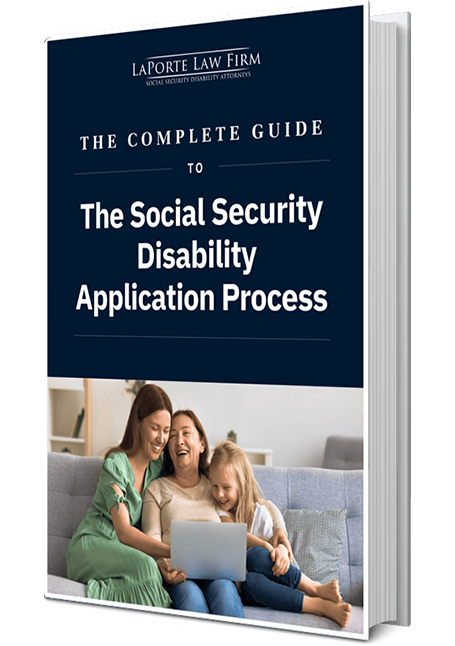
Did you know that those who are eligible for disability benefits and face a financial emergency may be eligible for a one-time payment from the Social Security Administration (SSA)? A one-time payment can be made more quickly than usual in certain circumstances to individuals who qualify. These one-time payments are made before the SSA makes the ultimate determination regarding disability eligibility. In all cases where an emergency or advanced payment is warranted, the claimant is either entitled to disability (the SSA already made a favorable disability determination) or they are presumptively disabled.
Understanding Emergency Disability Options
There are four types of expedited payments, each with strict eligibility requirements:
- Presumptive disability/presumptive blindness (PD/PB) payments
- Emergency advance payments
- Immediate payment
- Expedited reinstatement
This blog will discuss the different types of advance payments, the criteria for receiving an advance payment, and the eligibility requirements for each type of advance payment.
Who Qualifies?
Only SSI (Supplemental Security Income) applicants may qualify for presumptive disability/presumptive blindness advanced payments, emergency advance payments, and immediate payments. However, both SSI and SSDI (Social Security Disability Insurance) applicants may qualify for an expedited reinstatement of payments.
An SSI applicant/beneficiary has to prove financial crisis in order to receive an emergency advance payment or an immediate payment. For immediate advanced cases and expedited reinstatement cases, the SSI or SSDI applicant has already met the qualification standard for disability.
Exploring SSI Emergency Options
Let’s take a closer look at the features of the four emergency disability options, including the pros and cons of each:
Presumptive disability/presumptive blindness payments
PD/PB payments are designed to provide faster access to initial payments and assist with immediate needs for those SSI applicants who are likely to qualify for disability. The decision to award presumptive benefits is based on the severity of the condition, the evidence at the time the presumptive disability determination is made, and the likelihood that your case will ultimately be approved. It is important to note that presumptive disability payments are not based on financial need; rather, they are approved based on the existence of a disability that has a high chance for approval on the application.
If approved, PD/PB payments can last for up to six months at most. If you are not ultimately approved for disability, you will not be asked to pay back the benefits you received on the basis of presumptive disability. However, if you are denied on the basis of the performance of substantial gainful activity (SGA) or excess resources for the SSI program, you may be sent an overpayment letter.
What are examples of impairments that meet the requirement for presumptive disability payments? You may be eligible if you have the following impairments (this is a nonexhaustive list and for the purpose of providing examples only):
- Amputation of the leg at the hip
- Allegation of total deafness
- Allegation of total blindness
- Allegation of bed confinement without the ability to ambulate without a walker, crutches, or wheelchair due to a long-standing condition having lasted or expected to last 12 consecutive months (not a recent accident)
- Terminal illness confirmed by a physician (by telephone or signed statement of the physician)
- ALS (Lou Gehrig’s disease)
Pros: You get faster access to up to six months of initial payments, which help in the immediate term while you wait for the final disability determination.
Cons: These payments only last for up to six months, so they are temporary by nature. If the SSA takes longer than six months to make a final disability determination, you may face a gap between the end of the PD/PB payments and the start of the entitlement period for SSI benefits. For example, if the SSA takes nine months to approve disability, you will face three months without benefits. Finally, impairments that qualify for presumptive disability are viewed by the SSA as a high bar to meet the disability criteria.
Emergency advance payments
An emergency advance payment is a one-time payment for individuals who are facing a financial emergency and are due SSI disability payments or PD/PB benefits. A financial emergency requires a threat to health and safety, such as lack of food, shelter, or medical care. The Social Security field office requires strong evidence that you meet the requirements based on disability and financial emergency at the time of the application.
How much is the emergency advance payment? The amount cannot exceed the Federal Benefit Rate ($943 in 2024) plus the federally administered state supplement, if any. In the state of California, for example, the state supplement is $239.94. Therefore, if you qualify for an emergency advance payment in California, you will receive a maximum amount of $1,182.94 ($943 + $239.94).
Pros: You get quick access to funds for immediate financial emergencies. The funds can help with basic needs such as food, rent, or medical care.
Cons: An emergency advance payment needs to be repaid. The amount will be subtracted from the payments already due to you. Also, the payment is only a one-time payment, and it may not be enough to cover basic needs, especially in high-cost-of-living states like California. Finally, for you to qualify for and receive an emergency advance payment, strong evidence of both disability and financial emergency is required.
Immediate payment
The Social Security Administration may be able to issue an immediate payment if your disability payment is delayed and you are facing extreme financial hardship and are due disability benefits. The amount of the immediate payment cannot be higher than $999.
Pros: An immediate payment can help with a serious financial hardship impacting your ability to access food, shelter, or medical care.
Cons: The payment cannot exceed $999. Also, The payment is at the discretion of the Social Security field office, and you must establish a financial crisis preventing you from accessing food, clothing, shelter, or medical care.The immediate payment amount will be subtracted from the first disability payment owed to you.
Expedited reinstatement
An expedited reinstatement of benefits is available to disability beneficiaries whose benefits were terminated due to work income or excess resources (for SSI beneficiaries). If your benefits are terminated after the completion of a trial work period, for example, you may request an expedited reinstatement within five years of the work stoppage. In order to get approved, you must stop working due to a disability or impairment that is the same or related to your original disability claim. If your benefits were terminated due to work income or excess resources, you can request an expedited reinstatement of your benefits. If an expedited reinstatement is granted, you can continue to receive your disability benefits without the need to submit a new application.
You can request an expedited reinstatement of your benefits if all of the following apply:
- You are unable to work at SGA level due to your medical condition.
- You are either unable to perform SGA-level work or become unable to perform SGA-level work during the month in which you submit your request for an expedited reinstatement.
- You have a current disability preventing you from working that is the same or related to your original disability.
- Your request for an expedited reinstatement must be submitted within five years from the month your benefits stopped.
Pros: The benefits begin right away — no need for a new application.
Cons: The benefits only last six months, while the SSA may take longer than six months to make the disability determination on the issue of whether you have the same or related condition as your original claim.
Applying for Expedited Reinstatement and Getting Help
Here’s what you need to know about applying for expedited reinstatement and what you can expect after filing an application.
How to apply for expedited reinstatement
To apply for an expedited reinstatement, call the SSA and tell them you want to file for an expedited reinstatement.
- Call +1 800-772-1213
- Call TTY +1 800-325-0778 if you’re deaf or hard of hearing
If approved, you can receive disability benefits for up to six months while Disability Determination Services (DDS) makes a decision on your case.
Keep in mind that if you file over five years after your benefits were terminated, you are not eligible for an expedited reinstatement. You will have to file a new application for disability.
What to expect after applying
Once you receive your expedited reinstatement, the Social Security Administration will decide the merits of your current disability claim. This can take six months or longer, but your provisional benefits can only last for six months. While you’re receiving your provisional benefits, the SSA will determine whether your current disability is the same or related to the original disability claim.
FAQs
In the state of California, emergency advance payments cannot exceed $1,182.94.
If your application is approved, an employee at the Social Security field office can issue an emergency payment on the same day that the application is made.
You must be disabled or presumptively disabled and facing a financial emergency that threatens your access to food, shelter, clothing, or medical care.
You can apply for an emergency disability payment in person at your local Social Security field office. Visit the SSA website to find the location of your closest Social Security field office.















